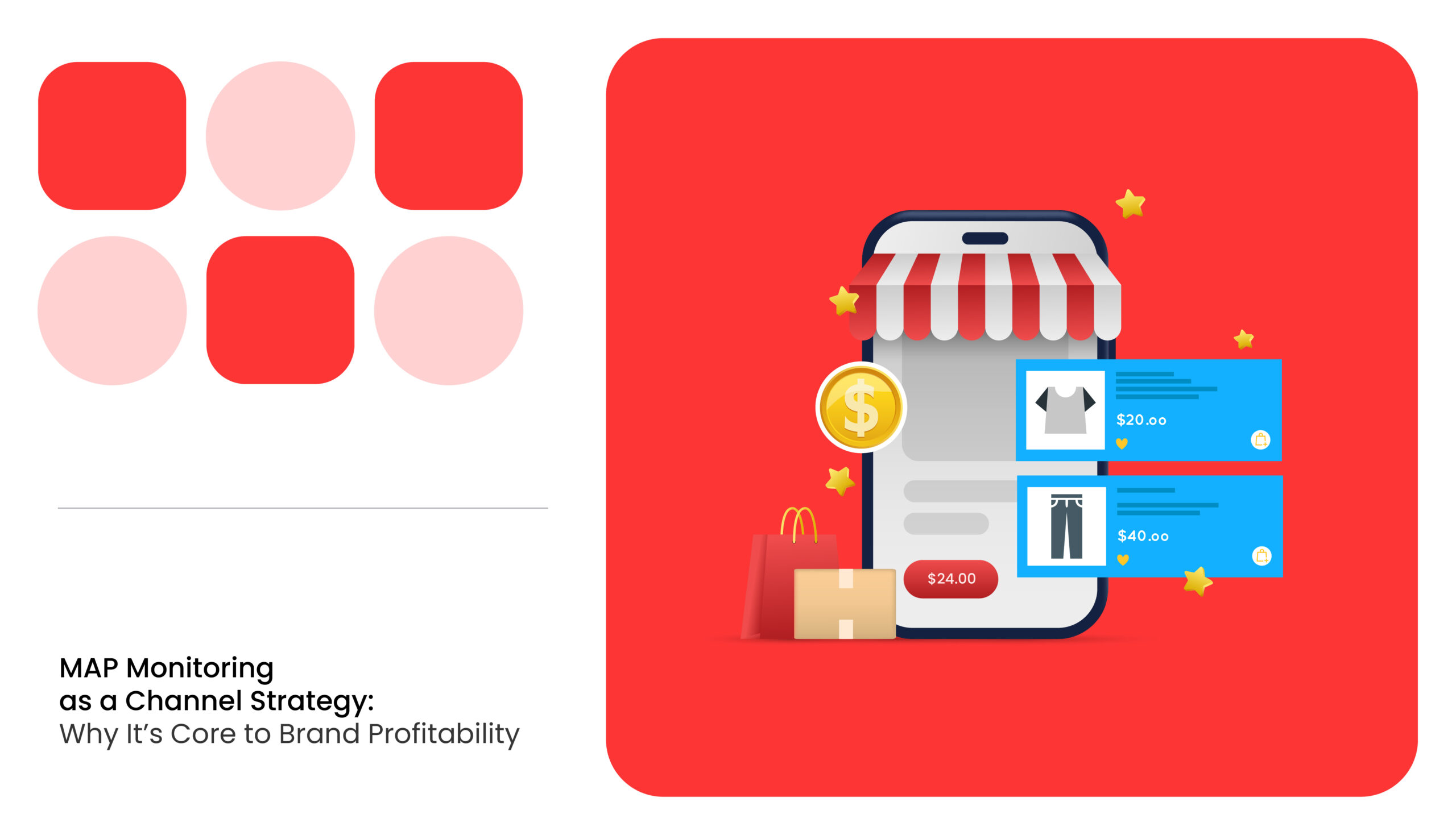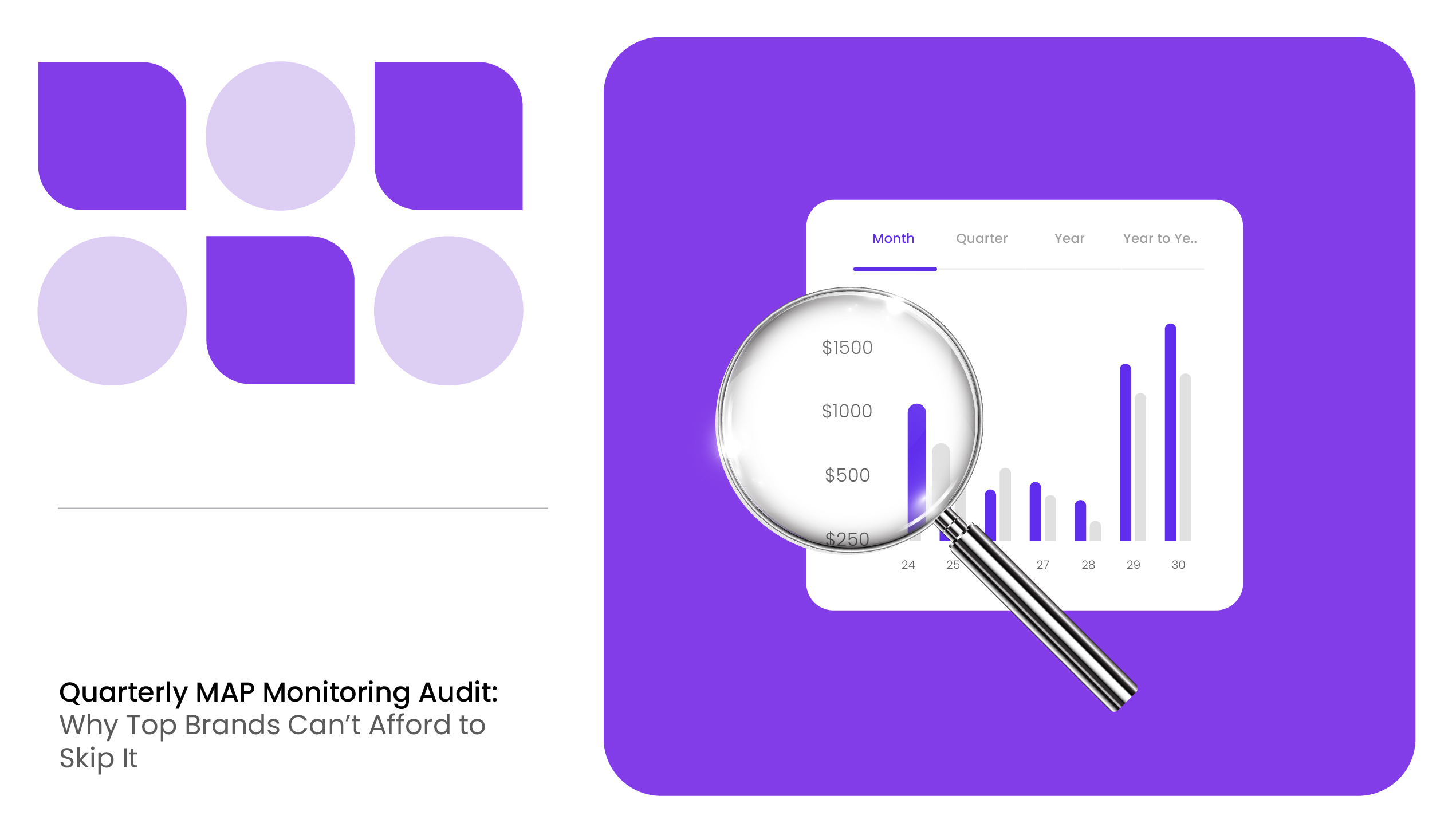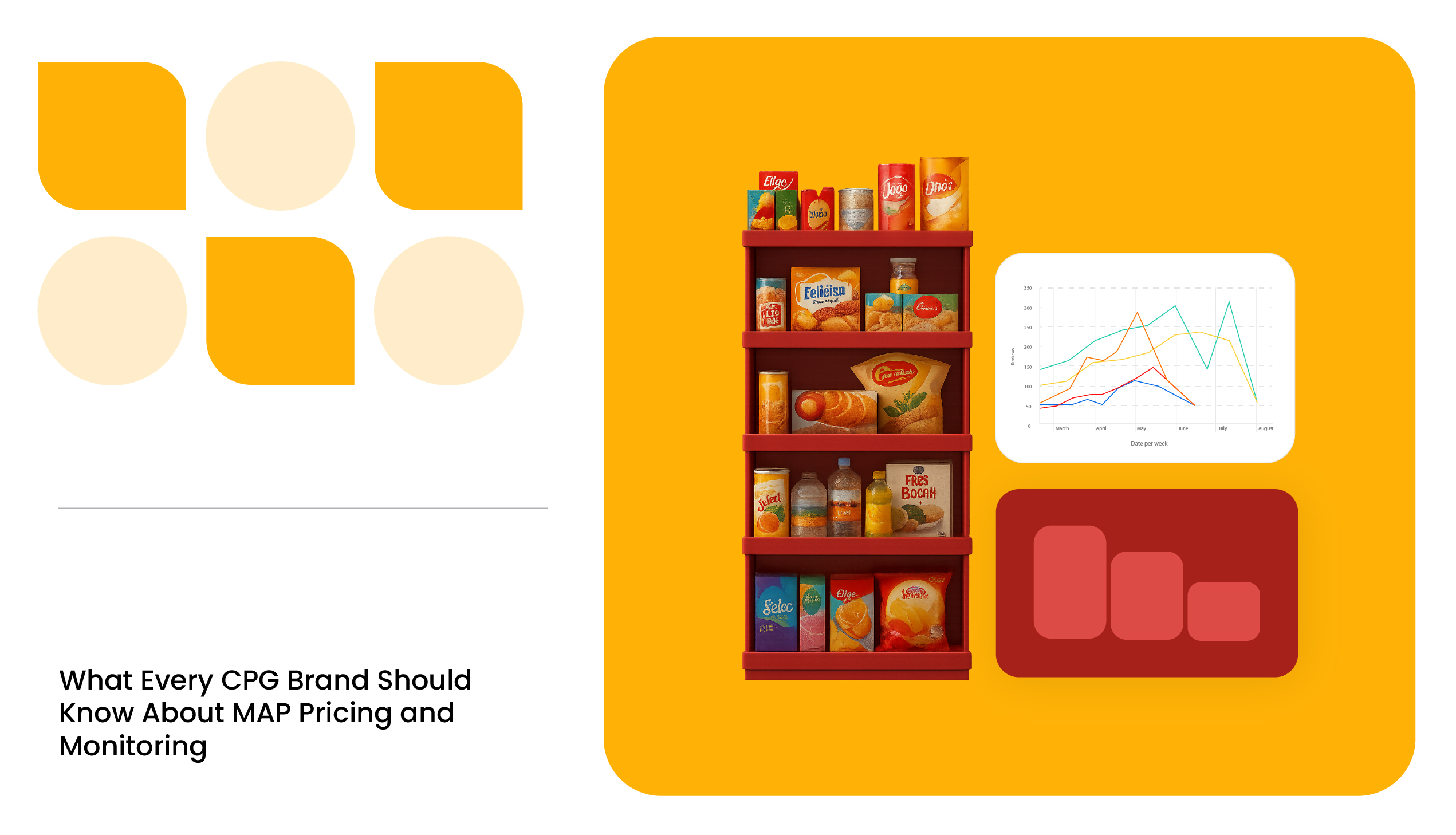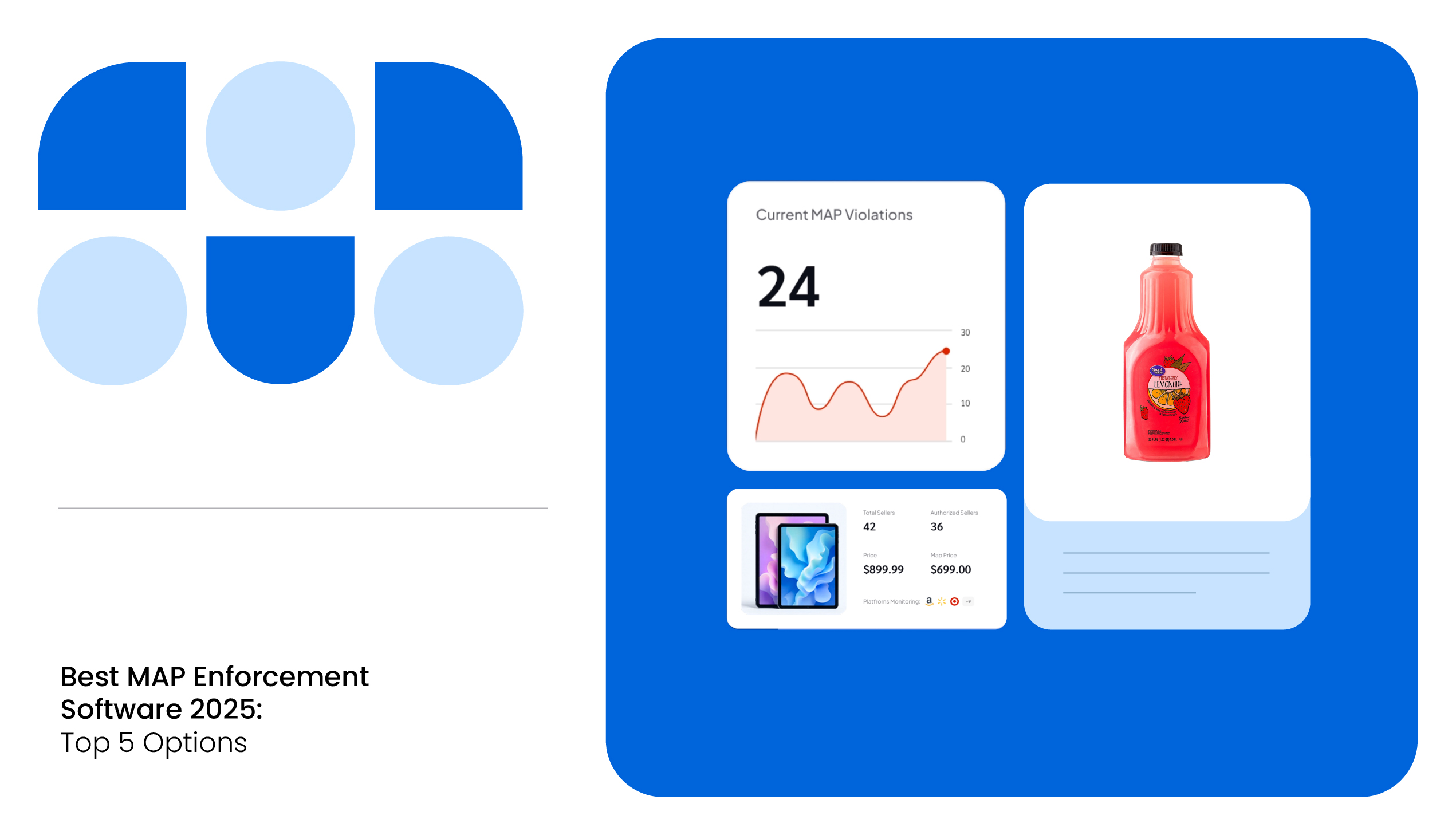Every brand today allocates a percentage of its business to online marketplaces like Amazon, Walmart, or eBay. These are high-velocity, high-potential sales channels that demand tight control over pricing and positioning.
But here’s the catch: without enforcing MAP (Minimum Advertised Price) policies, brands risk eroding their margins and reputation in these very channels.
And, MAP monitoring is often seen as a legal or compliance formality. That view is outdated.
When used strategically, MAP monitoring as channel strategy provides brands with a competitive edge. It aligns pricing with profitability goals, supports partner accountability, and enhances conversions by maintaining consistent value perception.
Let’s dive deeper into how using a MAP tool for channel strategy isn’t just a compliance exercise but a smart move to control how your brand performs online.
Why Use MAP Monitoring as a Channel Strategy?
Your e-commerce channels are your profit centers, you must manage them with discipline. That includes pricing discipline.
Most brands calculate expected margin contribution from each channel. But MAP violations by unauthorized sellers or rogue resellers can eat into those margins quickly. That’s not just lost revenue, it’s brand damage.
Integrating MAP monitoring as channel strategy helps enforce channel boundaries. It allows brands to:
- Maintain price integrity across multiple retailers
- Avoid channel conflict and price wars
- Reinforce value-based brand positioning
Channel strategy with MAP monitoring isn’t reactive. It’s proactive brand protection and control that turns pricing into a lever for growth.
READ MORE | Want to know why MAP monitoring is a must for protecting your brand online? Check out E-Commerce MAP Monitoring: The Must-Know Aspects for Brands
4 Benefits of Using MAP Monitoring as Channel Strategy
Brands that integrate MAP monitoring into their channel playbook gain more than MAP compliance; they get market clarity, reseller alignment, and pricing stability that feeds better ROI.
Here’s how a strategic approach to MAP delivers impact where it counts:
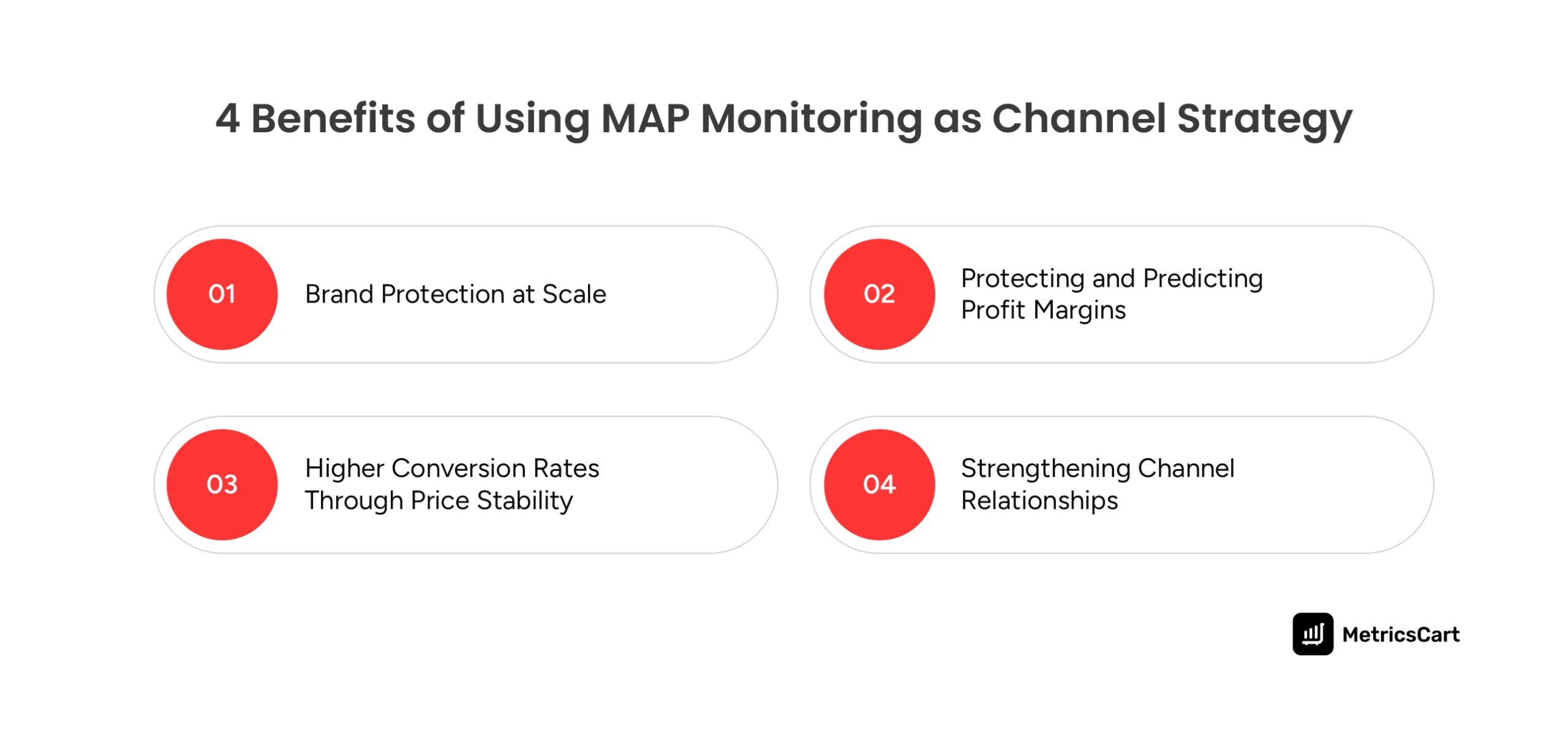
1. Brand Protection at Scale
When your brand is represented across dozens or hundreds of listings, there’s no room for guesswork. Unauthorized sellers and unauthorized discounts can quickly undermine your positioning, especially if they dominate high-traffic marketplaces. Every MAP violation chips away at the trust you’ve built.
Using a MAP tool for channel strategy creates a digital perimeter around your brand presence. Real-time alerts and violation tracking help you act fast. It’s not just about cleaning up messy listings; it’s about maintaining the integrity of how your brand appears across every sales touchpoint.
2. Protecting and Predicting Profit Margins
Your pricing model relies on certain assumptions: channel costs, promotional strategies, and expected reseller behavior. When a seller undercuts your MAP, it pressures other resellers to drop their prices too. That creates a downward spiral that erodes profit margins and undermines channel performance.
MAP monitoring as channel strategy provides visibility and control. Brands can use violation data to understand pricing trends, identify problem sellers, and make informed decisions about which channels are driving or draining profits. It’s not just damage control, it’s strategic forecasting and margin protection.

3. Higher Conversion Rates Through Price Stability
Online buyers today compare prices across platforms in seconds. If one listing is significantly cheaper than another for the same product, it doesn’t just hurt conversions; it creates doubt about authenticity and quality.
Integrating MAP monitoring channel strategy enables consistent price points that reinforce your value proposition. Consistency reduces cart abandonment, improves buyer confidence, and supports premium positioning.
This is especially critical for categories where trust and reputation drive the sale, such as electronics, beauty, or luxury goods.
4. Strengthening Channel Relationships
Resellers who play by the rules expect a level playing field. When brands allow MAP violations to go unchecked, they send the wrong message to their most loyal partners.
Channel strategy with MAP monitoring doesn’t just catch violators; it empowers your team to reward compliant partners. By identifying sellers who respect pricing policies, you can prioritize them for better terms, co-op campaigns, or exclusive SKUs. It also makes conversations with violators more data-driven, reducing friction and reinforcing expectations.
READ MORE | Worried about unauthorized sellers undercutting your prices? Check out Amazon MAP Policy Violation Is Killing Your Brand Value: Learn How To Detect and Prevent
Why Choose MetricsCart MAP Monitoring for Channel Strategy?
To use MAP monitoring as channel strategy, your brand needs a MAP monitoring tool that translates price enforcement into actionable channel insights.
MetricsCart’s MAP monitoring software transforms MAP monitoring from a compliance task into a core part of channel management, helping brands optimize marketplace performance and protect profitability.
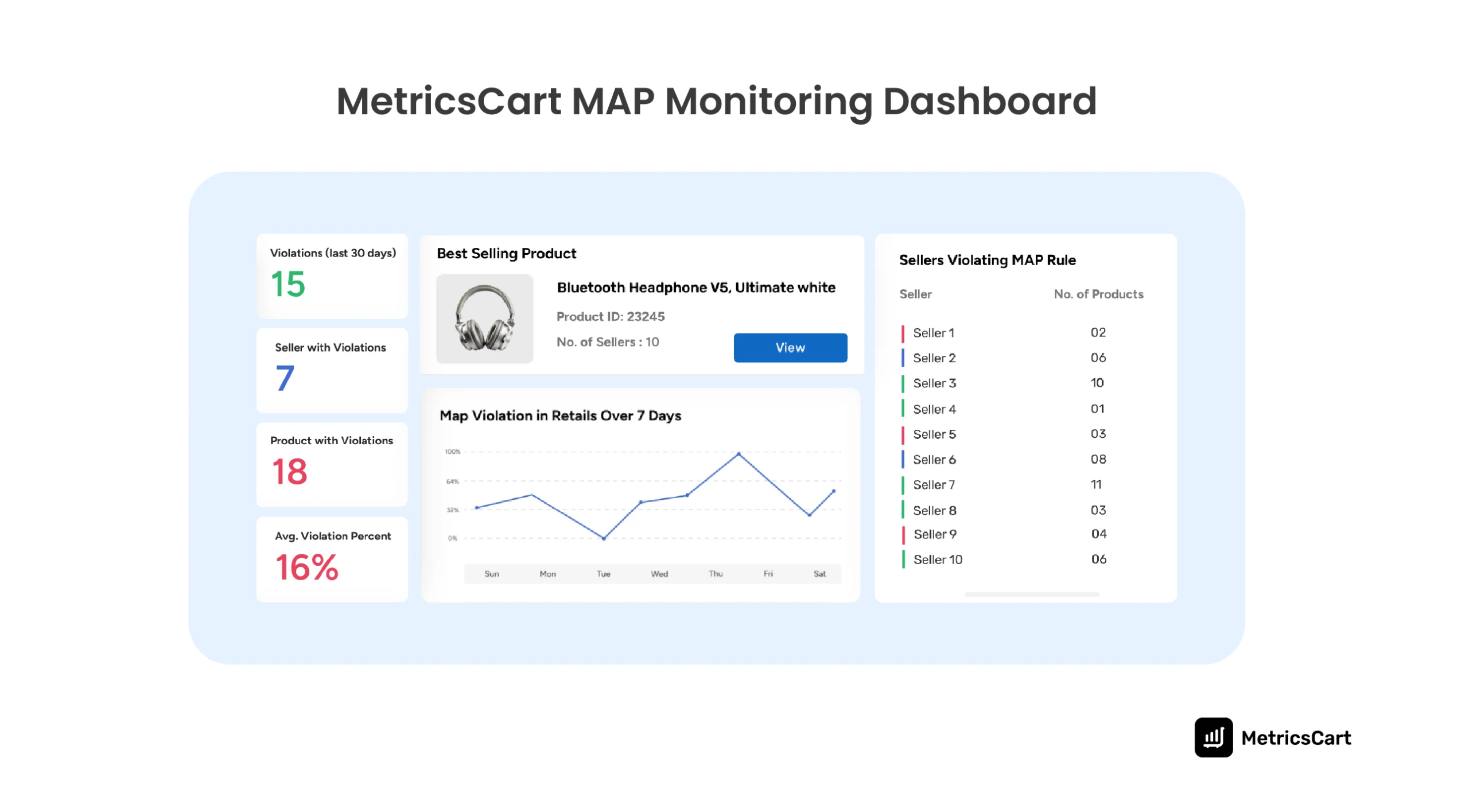
Key features that power the channel strategy:
- Seller Identification: Detects unauthorized sellers disrupting pricing.
- Violation Trends: Reveals recurring issues to address channel risk early.
- New Product Monitoring: Safeguards pricing on new launches where first impressions matter.
- Buy Box + Compliance Insights: Links violations to lost Buy Box share and seller reliability.
- Evidence Collection: Automates screenshots for fast enforcement and legal support.
- Tiered Enforcement Protocol: Enables graduated response levels, from warnings to reseller termination, aligning enforcement actions with brand risk.
A quick case study: An electronics brand struggling with MAP violations on Amazon cut infractions by 71% in just 60 days using MetricsCart. By identifying exactly where margin loss was happening and who was causing it, MetricsCart helped the brand regain control.
The result? High-value SKUs were protected, revenue leakage was stopped, and the brand restored pricing discipline. Most importantly, MetricsCart enabled a smarter, data-driven channel strategy, supporting compliant sellers and reinforcing brand value across critical online marketplaces.
Turning MAP enforcement into a channel strategy requires a system that delivers more than alerts. MetricsCart helps brands like yours translate MAP data into channel intelligence, giving teams the insights and tools to drive consistent pricing, partner accountability, and marketplace growth.
Closing Notes
Treating MAP monitoring as channel strategy shifts it from a compliance chore to a business advantage. It gives brands control over how products are priced, perceived, and sold; across every online marketplace.
This approach protects your margins, strengthens seller relationships, and improves conversion rates through consistent pricing. More importantly, it turns pricing enforcement into a lever for smarter distribution, promotion, and growth.
MetricsCart goes beyond basic compliance; it’s a strategic partner that helps you enforce MAP, protect margins, and optimize channel performance. Book a free demo with MetricsCart today and see how MAP monitoring can become the backbone of your channel strategy.
Want Ultimate Control Over Your Brand’s Value? Try Our MAP Monitoring Solution!
FAQs
MAP monitoring refers to tracking advertised prices across online retailers to ensure they comply with a brand’s minimum advertised pricing policy.
MSRP (Manufacturer’s Suggested Retail Price) is a recommendation. MAP is the lowest price a product can be advertised for, as set by the manufacturer.
Create clear MAP guidelines, share them with all resellers, use a MAP monitoring tool to enforce compliance, and take corrective action as needed.
MAP stands for Minimum Advertised Price. It’s a policy brands use to set the lowest price retailers are allowed to advertise a product for.
MAP compliance on Amazon means all resellers list a product at or above the brand’s set minimum advertised price. Monitoring tools are often required to detect and enforce violations effectively.

